Developing a predictive maintenance model for vessel machinery
Veronic Jrmillo Jimenez , Noureddine Bouhml , Anne Hugen Gusdl
a Department of Maritime Operations, University of South-Eastern Norway
b Kristiania University College
Abstract The aim of maintenance is to reduce the number of failures in equipment and to avoid breakdowns that may lead to disruptions during operations.The objective of this study is to initiate the development of a predictive maintenance solution in the shipping industry based on a computational artificial intelligence model using real-time monitoring data.The data analysed originates from the historical values from sensors measuring the vessel′s engines and compressors health and the software used to analyse these data was R.The results demonstrated key parameters held a stronger influence in the overall state of the components and proved in most cases strong correlations amongst sensor data from the same equipment.The results also showed a great potential to serve as inputs for developing a predictive model, yet further elements including failure modes identification, detection of potential failures and asset criticality are some of the issues required to define prior designing the algorithms and a solution based on artificial intelligence.A systematic approach using big data and machine learning as techniques to create predictive maintenance strategies is already creating disruption within the shipping industry, and maritime organizations need to consider how to implement these new technologies into their business operations and to improve the speed and accuracy in their maintenance decision making.
Keywords: Maintenance in Shipping industry; Big Data Analytics; Vessel Machinery; Sensor Systems; Sensor Data; Condition Based Maintenance; Predictive Maintenance.
1.Introduction
Maintenance is divided into two main categories, Preven- tive (PvM) and Corrective (CM) maintenance; PvM is further divided into Condition Based Maintenance (CBM) and Pre- determined Maintenance (PM).During the 20th century, the approach to maintenance within manufacturing and process systems has undergone a major development.Throughout the first half of the 20th century, industrial equipment was simple and often ignored as the effect of machinery malfunction was not considered critical to operations.Industrial machinery was operated until failure and maintenance was only performed af- ter fault recognition [2] .The origin of failure was not inves- tigated further, and maintenance activities would rather focus on restoring and repairing the machine to operational condi- tions.This type of breakdown approach is known as CM.By the end of the Second World War, the upturn of the economy and increase in product demand by the West encouraged the development of industrial production systems.As manufac- turing machinery became more complex along with a higher emphasis on production costs, the role of maintenance turned in to be increasingly important.Thus, the reactive approach shifted towards a PvM mind-set with scheduled maintenance activities aiming to prevent equipment failure from occur- ring [2] .With this philosophy in place, rather than replac- ing components after failure, parts critical to the machinery were swapped at either predetermined time intervals or af- ter a stablished number of operating hours, regardless of the real status of the element.As the world became more glob- alized and economies of scale increased competition among manufacturing instances, this resulted in the capital cost of productions to grow larger, causing rises in cost for replacing equipment.
To maximize the utilization of machinery and minimize the unnecessary substitution of its elements, in 1970s the Amer- ican defence and aviation industry pioneered CBM [18] .Un- like the preventive approach characterized by scheduled time intervals, CBM was initiated according to the status of the component, monitored with methods ranging from visual in- spections to continuous sensor-based analysis with real-time process data.Thus, when critical parameters outpaced prede- termined ranges, maintenance activities were carried out.Fur- ther the introduction of CBM, maintenance activities started to be determined according to the analysis of the historical process data and forecasted based on data trends, giving place to the next level of maintenance known as Predictive Main- tenance (PdM) [26] .The principal difference from CBM is rather then looking at points of measurement, PdM aims to analyse historical trend, thus allowing greater knowledge and control of the equipment status [14] , while potential faults can be detected and prevented at early stage.Furthermore, one of the most appealing benefits of PdM is the reduction of operational costs by optimizing maintenance activities [11] .
Traditional preventive maintenance is not sufficient to cor- rect random failures (Nowlan and Heap [16] .A study from the aviation industry discovered that 89 percent of all fail- ures were not age-related, thus the traditional preventive ap- proach was inadequate to avoid failure (Nowlan and Heap (1978).The proportion within the shipping industry is not so far from thus number, as according to the US Navy MSP study (1982) the number of random failures was 77 percent, while according to the SUBMEPP study [1] on US Navy sub- marines the percentage reached 71.According to both studies, the age-related failures is attributed to continuous degradation by corrosion when equipment are in a saline environment, yet the failure patters are in its majority due to random failures, which can only be addressed by detecting them before they occur, that is by following a predictive maintenance approach.
In the recent years, PdM has become increasingly impor- tant for industries such as manufacturing, production and avi- ation serving as a guiding tool to increase equipment utiliza- tion, reduce downtime, avoid unnecessary maintenance and estimate remaining lifetime.However, this has not yet been the case in the shipping industry as ship maintenance proce- dures have not been considered as an area needed of expen- diture [12] , thus advanced monitoring methods have not yet been widely applied [12] .Shipping maintenance is not only important as it can disturb the ship′s sustainability but also represents a huge expense affecting the overall profitability of the ship.Unplanned accidents and machine breakdown come with heavy repair cost, as besides the corrective actions that are taken; in most cases, there is also the inability to de- ploy the vessel or to pause operations, thus causing a loss in revenue.PvM is, in 2019, the most common strategy in the shipping industry; maintenance schedules are planned in ad- vance in accordance with manufacturer recommendations and classification society requirements, this allows to reduce non- operational time and to anticipate for resource availability, i.e.: spare parts, yards, docking, human resources.Nonethe- less, a preventive approach it’s not ideal in all cases, as it cannot guarantee zero failures and does not provide any ben- efit in terms of cost.
Maintenance in shipping has often adopted a preventive or scheduled maintenance system, which may, or may not, in- clude a condition-monitoring scheme.According to Shorten [23] only 17 percent of classed ships operate with an approved preventive maintenance system (PM), and only 12 percent of these use condition monitoring, leaving around 2 percent of classed ships with a condition based monitoring scheme.With such a small percentage of ships using condition based monitoring (CBM) as part of their maintenance strategy, the number of ships taking a step further and using CBM data to evolve to a predictive maintenance approach is non-existing in the available literature.This ratifies a gap in the indus- try and in the literature on how to incorporate a predictive maintenance philosophy using an established condition based monitoring scheme.Theobjectiveofthisstudyisthereforetoinitiatethedevelopmentofapredictivemaintenancesolutionintheshippingindustrybasedonacomputationalartificialintelligencemodelusingreal-timemonitoringdata.In order to investigate this from a real and practical perspective, a case study of one vessel, in collaboration with a Norwegian Ship- owner Company, is performed.The company facilitated all operational data from the vessel’s condition monitoring sys- tems, specifically sensor-based information from their engines and compressors.
2.Categories of Maintenance
Maintenance type is defined by the causes that motivate actions of maintenance initiated.In Figure 1 the correla- tion between maintenance types applicable to this research are illustrated.Thus, maintenance is divided into two main types, namely Preventive (PvM) and Corrective (CM) main- tenance; Preventive maintenance is further divided into Con- dition Based Maintenance (CBM) and Predetermine Mainte- nance (PM).
2.1.Corrective Maintenance
Also known as “run-to-failure (RTF)”, “breakdown main- tenance” and “reactive maintenance” all terms to refer to cor- rective maintenance [27 , 28] .The philosophy here is to “fix it when it breaks”, thus maintenance occurs when the system has failed.Corrective maintenance is defined as the "mainte- nance carried out after fault recognition and intended to put an item into a state in which it can perform a required func- tion" [26] .Generally speaking, running equipment primarily based on corrective maintenance is not consider an effective approach for businesses, as companies are forced to react to situations rather than anticipating and planning event in ad- vance.However, this type of maintenance is not a complete wrong strategy, as there are some few instances where cor- rective maintenance is viable such as low criticality of the equipment or no value creation is connected to the main sys- tem.In other words, corrective maintenance can be accepted if failure of the equipment in question does not affect nor- mal operations and if whether a sudden loss of equipment functionality would affect the organisation’s overarching ob- jectives.
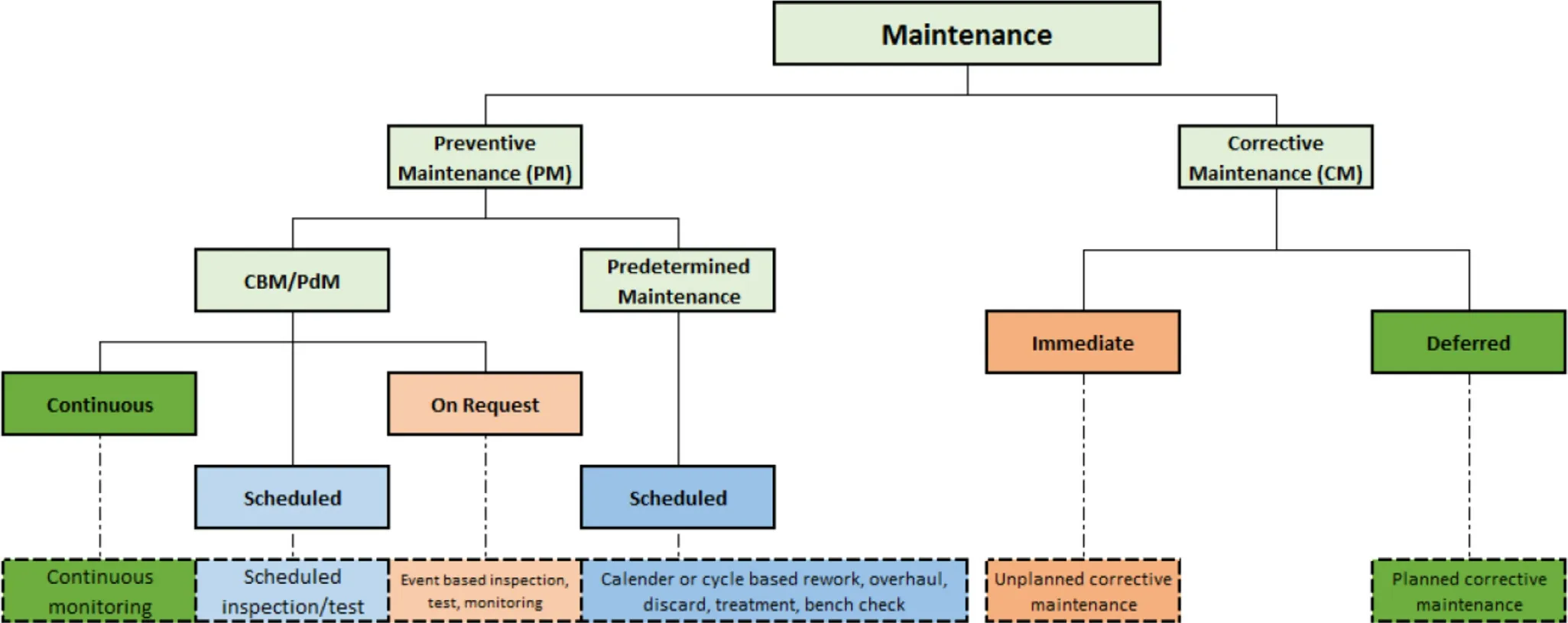
Figure 1.Types of Maintenance, adapted from the maintenance terminology standard, [3]
2.2.Preventive Maintenance
Schedule or predetermined maintenance, historical, calen- dar or cycle based maintenance are just other terms that refer to preventive maintenance.Preventive Maintenance (PM) is defined as “maintenance carried out at predetermined inter- vals or according to prescribed criteria and intended to reduce the probability of failure or the degradation of the functioning of an item” [26] .According to Rausand and Arnljot [21] and Scheffer and Girdhar [22] the philosophy behind PM is to "fix it before it fails", thus maintenance is carried out before the equipment enters to a failure state.To prevent the failure of equipment, minimize the probability of loss of function or maintain an adequate level of dependability, it requires per- forming regular maintenance task.The underlying assumption is that every equipment/machine will undergo some degrada- tion as it ages during its operation, thus it at some point fail due to time and use.Preventive maintenance is divided into two categories: Predetermined maintenance and Condi- tion based maintenance
2.3.Predetermined Maintenance
Predetermined maintenance is a type of preventive main- tenance activity executed based on time intervals established according to historical observations on similar equipment and to previously assigned lifetime to components.As this type of maintenance is carried out based on historical documented information from similar/same equipment, actual performance of the item is not considered, meaning the state of the equip- ment either in normal functioning or failure state is disre- garded at the predetermined maintenance approach, thus at- taining the interval maintenance.Moreover, predetermined maintenance requires that the equipment has relatively pre- dictable patterns of failure to be beneficial.Yet, the complex- ity of newer equipment and sophisticated technology the last decades has made sequentially patters of breakdown harder to identify.This method is often criticised for being a waste- ful maintenance philosophy, as for most technology-oriented businesses it is difficult to increase a system’s reliability by implementing predetermined maintenance without “over- maintaining” at too large costs [14] .
2.4.Condition Based Maintenance
Condition Based Maintenance (CBM) is defined as “pre- ventive maintenance which include a combination of condi- tion monitoring and/or inspection and/or testing, analysis and the ensuing maintenance actions” [26] .In CBM activities are initiated by the condition of the equipment which is con- stantly monitored and analysed allowing the decision making of maintenance to be based in the actual condition of the equipment.The principal objective of CBM is that the condi- tion of the equipment is the driver for its maintenance [28] .CBM can be originated from physical inspections reporting changes in the physically notable attributes of a machine such as vibration or sound, or more sophisticated methods such as sensors and other devices to continuously monitor the con- dition of equipment.Although smart sensors and advanced instrumentation techniques have raised popularity [17] , it is also a costly method, thus it is often not used everywhere in the machine but rather prioritized into critical assets.That is also to say that as the price of equipment and sensors con- stantly reduces, CBM thus continually gets more accessible [14] .The motivation for establishing CBM is to increase the overall level of safety during operations in order to minimize the loss of life, property and the costs associated to the main- tenance of the equipment or system being monitored.
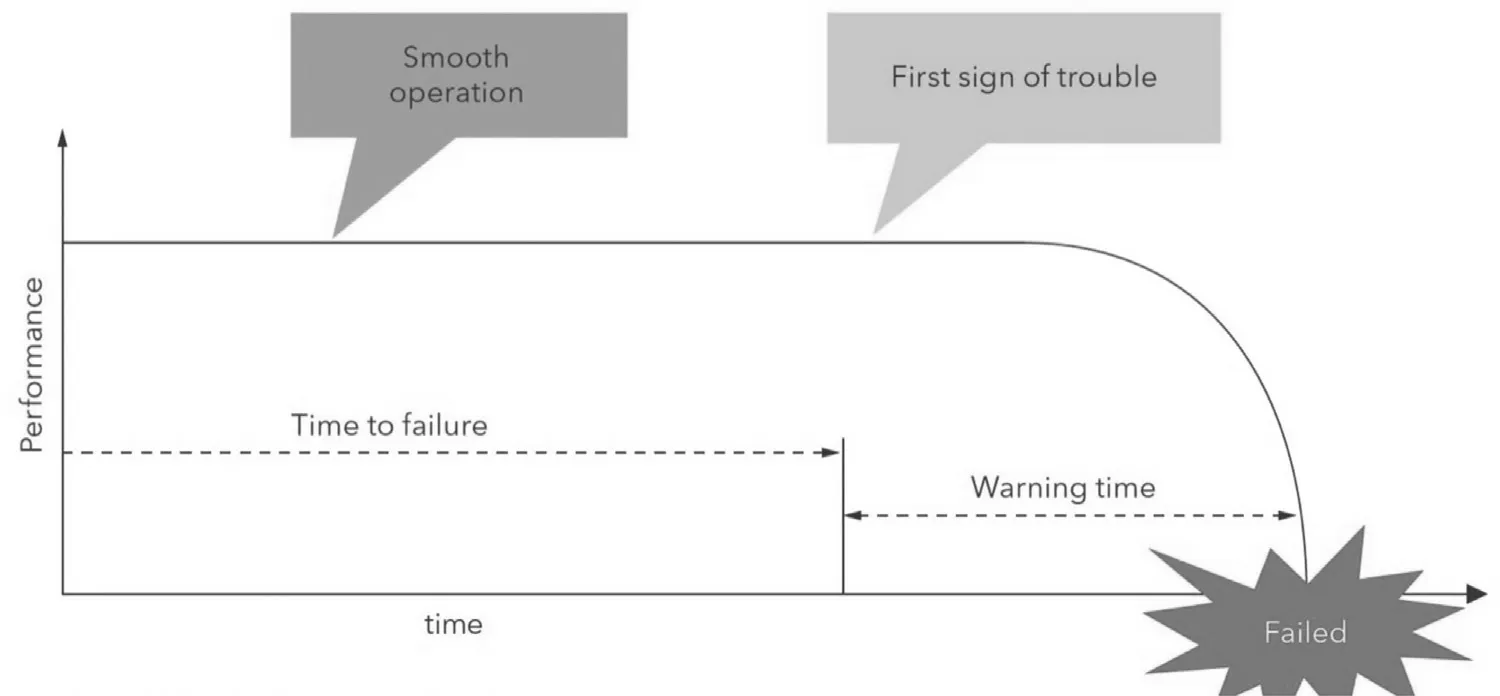
Figure 2.Representation of Condition Monitoring concept, [8]
As observed in Figure 2 , the reliability of the equipment is improved as constant monitoring allows the early detec- tion of possible failures thus supporting decisive actions such as maintenance and/or operational measures to avoid the de- velopment of loss of functionality or potential breakdown.It is important to highlight that CBM only provides information regarding the functional status of the machine/equipment, aid- ing to plan in advance actions within maintenance tasks, yet this approach does not help in enhancing the functionality of the machine nor to delay its failure.One of the main benefits of this proactive maintenance is that rather than just reacting to possible failures, this method foments to not only make a prediction on maintenance but also gives the possibility to address the root cause of breakdown, hence supporting the learning and more accurately predict future failures.
According Nowlan and Heap [16] traditional preventive maintenance was not sufficient to correct random failures.In their study, they analysed failures of equipment installed on board aircraft and concluded that failure of equipment falls under one of six patter groups, each showing different trend patterns characteristics of failure rate vs age of the equipment (see Figure 3 ).
The most important revelation from this study was that 89 of all failures were not age-related, thus the traditional preven- tive approach was inadequate to avoid failure.The proportion within maritime vessel is not so far o from thus number, as according to the US Navy MSP study (1982) the number of random failures was 77 while according to the SUBMEPP study [1] on US Navy submarines the percentage reached 71.According to both studies, the age-related failures is attributed to continuous degradation by corrosion when equipment are in a saline environment, yet the failure patters are in its ma- jority due to random failures, which can only be address by detecting them before its occurrence, that is by following a predictive maintenance approach.
2.5.Reliability Centered Maintenance
A widely-used maintenance strategy across industries is the Reliability Centered Maintenance (RCM), which is a concept that can be simply described as a mix of preventive, correc- tive and predictive maintenances.It is based on a systematic process to determine required maintenance actions, from a functional aspect, for a system to maintain its reliability and it is based on the function and reliability of critical equip- ment by targeting the root cause of failures [24] .The cur- rent level of RCM and condition monitoring within shipping varies, according to DNV (2014), on the ship type, age and components.Sensor monitoring is mostly done at the com- ponent level and its sophistication relies on the components manufacturer.These sensors measure levels of items such as temperature, pressure and vibration, and in most cases the component with most sensors and refined monitoring systems are the main engines.Damage statistics demonstrate that the main engine is the single component responsible for most serious damages on ships [13] .Likewise, condition monitor- ing is also applied to other components within the propulsion system, including gears, bearings and propellers, while other critical auxiliary components are also part of a sensor-based monitoring system.The criticality of a component is judged with respect to the safety and performance of the ship, thus the more crucial the component is to operations, the higher is the requirement for a sophisticated monitoring.The sensors used in the components are normally enable by the component maker; commonly ships count with components from many different manufacturers, thus there is a likelihood of having various uncoordinated monitoring systems.This leads to an increased complexity in capturing the overall system status and to identify the interdependency of the components, hence not capturing the full bene ts of condition monitoring.Pro- cessing the data from sensor monitoring is usually done by the ships’ crew, by manually monitoring single alarms and trends, however in some ships automated data diagnostics and prog- nostic routines are built into the on-board systems [8] .Ad- ditionally, systems build onshore are being integrated as part of operations to perform remote monitoring and data process- ing through the transmission of sensor data from the ship.The objective behind sending raw/processed data to shore installa- tions in real-time is to allow advanced computational models to process the data and provide adequate and timely diagno- sis to the ship regarding operational measures and corrective actions required to avoid and prevent failures.

Figure 3.The 6 possible failure rates patterns [16]
2.6.Predictive Maintenance
Predictive Maintenance (PdM) is based upon the philoso- phy that "if it is not broken, don’t fix it" and it is defined as "Condition based maintenance carried out following a forecast derived from repeated analysis or known characteristics and evaluation of the significant parameters of the degradation of the item" [26] .The main idea behind this approach is the use of historical data to detect trends of equipments’ behaviour in order to predict when it will fail.Once failure trends are iden- tified, and the timing of failure predicted, predictive mainte- nance tasks may be planned-ahead.There are numerous types of PdM techniques that serve as basis for prediction, however for the purpose of this study, PdM tasks focus on the usage of analytics software for historical data.Typically, equipment shows signs of impeding failure before a breakdown event takes place; examples of this include increases above normal temperatures, rise in vibration levels or change in vibration spectral pattern, drop in performance levels, increased noise level, change in current and voltages, among several other signs [5] .Predictive maintenance is the systematic application based on these early conditions as warnings to provide timely maintenance before reaching equipment failure.Thus, it is imperative that machines are equipped with a system and/or sensors that provides early signs of breakdown.In turn, main- tenance activities may be planned in manners that consider not only maintenance needs but also working/production sched- ules.This allows for higher machine availability, increased profit and lower costs of inventories of spare parts, hence reducing maintenance costs.
This approach also requires a shift from traditional mainte- nance philosophies and management procedures that supports maintenance tasks to be triggered by real maintenance rather than carrying out calendar-based maintenance.
Figure 1 presents a proposed framework for achieving pre- dictive maintenance, which must be built in close coopera- tion with ships experts to determine critical failure modes and to understand the maintenance actions and behaviours at the component level.A data pre-processing and matching of results is performed, which constitutes stage 1 and 2 in Figure 4 , described as follows:
1.To perform data pre-processing analysis, to identify pat- terns, trends and correlation between the parameters ex- amined.
2.To understand the actions taken after component failure or parameters outside rage.
3.Are there any critical parameters to operations?
4.Could any maintenance performed be avoided or postponed matching the real component status?
3.Method

Figure 4.Framework for achieving predictive maintenance, adapted from [4]
A case study design is selected for this study [15] , the case is a Seismic Survey Ship type vessel with deadweight of 7351 t, built in 2013 with six engines and three compres- sors.To maintain the anonymity of the ship-owner company, no further technical specifications will be given.Collection of the three types of data, Lube Oil Data, Vibration Data and Performance Data was carried out, yet due to a limita- tion with the first set of data, a second set was collected for the performance data type.The first data set contained 25089 records while the second data set contained 64800, with each record measured every minute of vessels operation.addi- tion, threshold values were provided as a complementary data file.
LubeOilDatacomprised historical information regarding Lube Oil Tests performed to the vessel from 2013 – 2018.As the tests comprised many parameters, the most relevant ones were selected for this study in cooperation with the fleet manager and vessel superintendent in the company.
The nature of this data was structured data with numerical and text inputs; in total 624 records of tests were analysed according to pre-selected parameters (i.e.: viscosity, additive, wear and oil elements, ratings etc.) which will be further ex- plained in the results section.A correlation test was performed to all parameters to identify the degree of linear relationship between to parameters.This test is known as the Pearson product-moment correlation coefficient and it is a numerical estimate of both the strength of the linear relationship and the direction of the relationship; the correlation coefficient ranges in value between -1.0 and + 1.0, a perfect positive correlation has a coefficient of 1.0 while a perfect negative correlation has a coefficient of -1.0.If there is no association between two variables, the correlation coefficient has a value of 0.Ac- cording to Cohen′s [7] to interpret the effect size, a correlation coefficient of .10 represents a weak or small association; a correlation coefficient of .30 is considered a moderate corre- lation and a correlation coefficient of .50 or larger represents a strong or large correlation.
The backbone for an effective study and suitability to the research objectives is the appropriate selection of software tools.Microsoft Excel and R were selected as analytical soft- ware.Microsoft Excel is a commonly used software known for its wide application in statistics.R is a free software for statistical and data analysis through statistical and graphical techniques such as linear and nonlinear modelling, classical statistical tests, time-series analysis, classification, clustering, etc [20] .R was chosen for this study as it is ideal for han- dling large sets of data and facilitates the integration of data manipulation, calculation and graphical display.
VibrationDatarefers to the vibration readings captured by a Condition Monitoring system.Vibration Analysis can be used to determine the root causes of defects problematic rotating machinery, such as: gearboxes, fans, shafts, motors, compressors, pumps, mixers, driers.
The data provided was measured from the end of 2016 un- til mid 2017.All the measurements were of numeric nature; in total 15515 records were included.Through a third-party provider, the company counts with a condition monitoring software that captures vibration readings from plant machin- ery capturing asset′s real time status.This type of condition monitoring is a pre-requisit for developing a predictive main- tenance model, as it allows maintenance activities to be driven by the condition and performance of the assets rather than on a recommended time basis.This is considered as an earlier step to PdM as this software identifies the current-status of an asset but cannot predict in its future condition.The analysed data had the following characteristics: 1) The readings were provided for 116 assets; 2) There were 34 different measure- ment points, however each asset had between three to eight measurement points; 3) Vibration was measured though sev- eral “window description” including overall vibration, motor unbalance, misalignment/looseness, harmonics, high frequen- cies, acceleration and ESP Carpet.
PerformanceDatais captured as part of the vessels perfor- mance monitoring though its Integrated Automation System (IAS).This was the largest data in terms of volume in com- parison with the two previous types of data and was com- pletely numerical based.Despite the availability of a hefty number of parameters measured, in conjunction with the com- pany′s experts, 537 parameters were selected to be part of this study.The selection of these parameters was based in the ex- perts knowledge of the most influential parameters that indi- cated the statuses of the equipments.These parameters repre- sent the monitoring of components for three compressors, six engines and a few miscellaneous.
Parameters were measured every minute, providing a great amount of data from everyday operations.The main objective for analysing these sets of data was to identify the equipment condition by detecting those parameters that were outside threshold values, and to determine the correlation between parameters.The data was delivered by the company in excel format, however given the great amount of data, the author performed the analysis in R software.
4.Results
4.1.Lube Oil Data
Used oil analysis is an important part of engine mainte- nance as it provides information regarding the condition of the oil, its aptness for further use and to a certain degree also gives some information about the condition of the machin- ery lubricated by the oil.Oil samples are taken on regular intervals, typically defined by the OEM (Original Equipment Manufacturer) or by the oil supplier, but will normally not be greater than 3 months apart.Samples are sent to a laboratory for analysis.According to [6] the purpose of conducting this oil analysis is to i).Provide recommendations on its suitabil- ity for further use and optimization of the oil change intervals, ii).to enable the detection and thus prevention of issues which left unattended may impact the reliable operation of the en- gine.Thus, the laboratory completes typical routine analysis to check the physical and chemical characteristics of the oil such as viscosity, water content, base Number, insoluble, flash Point, elements, etc.
The following sections explore the results and the main purpose of the graphs is to examine the behaviour of the parameters, if they had any point of measurement outside the established ranges and the impact that it had over the overall status of the sample.Even though the correlation test was performed to check the relationship among all the parameters, the discussion will be centered around the parameter “Overall Status” as ultimately this parameter indicates whether or not the oil sample achieved the desired values within the rest of the parameters.
4.1.1.Manufacturingcompany,Model,LubeoilName,AssetIDandOverallStatus
Figure 5 , Figure 6 and Figure 7 present a summary of the respective parameter against the overall status.The overall status is one of the most informative parameters in the tests results as it indicates a general picture of the condition of the oil, including three statuses normal, caution and alarm.Normal status indicates the test is within the typical values, while caution and alarm could indicate that the threshold val- ues were surpass, or that the sample taken was not valid, among other reasons, thus further investigation is required from the engine staff as a potential problem could arise from these statuses.In addition, Figure 8 displays the historical count of overall status for normal, caution and alarm.
4.1.2.Viscosityat100°Cand40°C
Figure 9 shows the viscosity measured at 100 °C and 40 °C.As observed in the graphs for most of the samples taken both viscosities were within the limits.In addition, the correlation coefficients are small - Alarm Status – V100C (0,14), V40C (0,21); Caution Status – V100C (0,15), V40C (0,21) - indi- cating a minor effect in the overall status.
4.1.3.AdditiveElements
Figure 10 illustrates the Calcium and Magnesium parame- ters; these are additive elements used to identify of the lubri- cant in use, or as an indicator that the lubricant analysed has been mixed or contaminated by another type of oil grade or brand.Even though Magnesium seemed to have quite several samples outside the range, according to the correlation coef- ficient - Alarm Status Mg (0,08); Caution Status Mg (0,08) - this did not affect the overall status of the tests.Same applies for the Calcium parameter′s correlation coefficient - Alarm Status Ca (0,03); Caution Status Ca (0,02).
4.1.4.WearElements
Figure 11 displays the behavior of the wear elements; these may indicate wear of bearings, piston rings, cylinder liners and other engine components.Despite limits were assigned to each element, it is important to mention as component wear is directly influenced by the engine type, one cannot interpret single samples, but rather the only way to appreciate the analysis results is to plot the different values and follow the trends.Looking at the correlation coefficients and graphs, Copper had a significant number of samples outside range, having a moderate effect in the overall status.Likewise, Tin had also some samples beyond the threshold limits having an almost moderate effect the overall status.The remaining elements had no effects in the overall status and were within limits.The correlation values with overall status shown for alarm status – Al (0,02), Cr (0,04), Cu (0,35), Fe (0,09), Mo (0,17), Sn (0,22); caution status – Al (0,02), Cr (0,04), Cu (0,35), Fe (0,09), Mo (0,17), Sn (0,21)
4.1.5.OilContaminants
The oil contaminants analysis, presented in Figure 12 , re- veal if the oil is contaminated, either from particles arising from sea particles or derived from the use of HFO.Despite Vanadium and Nickel presented a great number of samples above the desired limit, this does not seem to have impacted the overall status.Yet, Barium seemed to be the only oil con- taminant element having a small affect in the overall status.The correlation values with overall status shown for alarm status – Ag (0,03), B (0,02), Ba (0,26), Ni (0,04), V (0,07); caution status – Ag (0,03), B (0,02), Ba (0,26), Ni (0,05), V (0,08)
4.1.6.TotalAcidNumber(TAN),TotalBaseNumber(TBN),WaterPercentage
Figure 13 shows the Total Acid Number (TAN), Total Base Number (TBN) and Water Percentage; TAN indicates oxida- tion or contamination with acidic products, using lubricating oil, with a high AN can be corrosive, however the graph shows all samples were within ranges and had no effect in the overall status.Moreover, the presence of water affects the viscosity of the lubricating oil, yet most samples are again within the range with a minimum effect the overall status.And last is the TBN, this parameter is a measure of (alka- line) additives in the oil, the higher an oil’s total base number (TBN), the better its ability to neutralize contaminants such as combustion by-products and acidic materials which results in improved protection against corrosive reactions and longer oil life.The correlation coefficient had a negative and strong correlation against the overall status; this is due to many of the samples were outside the minimum acceptable value, thus low number of the TBN has an important effect in the overall status and may trigger alarms and cautions as a result.The correlation values with overall status shown for alarm status – TAN (-0,16), TBN (-0,57), H2O (-0,24); caution status –TAN (-0,15), TBN (-0,56), H2O (-0,23)
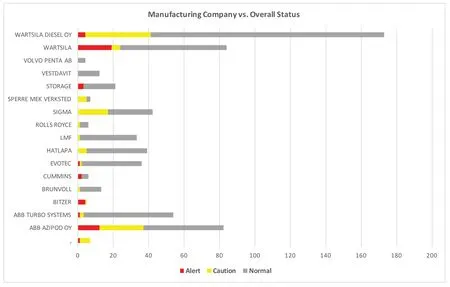
Figure 5.Number of alerts, caution and normal statuses
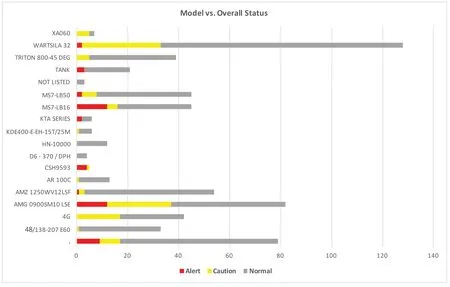
Figure 6.Number of alerts, caution and normal statuses

Figure 7.Number of alerts, caution and normal statuses
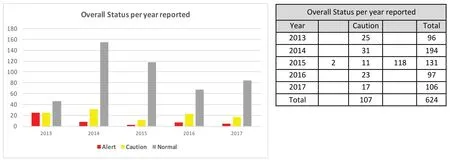
Figure 8.Overall Status (Normal, Caution & Alert) per year
4.1.7.ParticleCount4μmStatus,Contamination,EquipmentandOilRating

Figure 9.Historical values of Viscosity at 100 °C & Viscosity at 40 °C with threshold limits
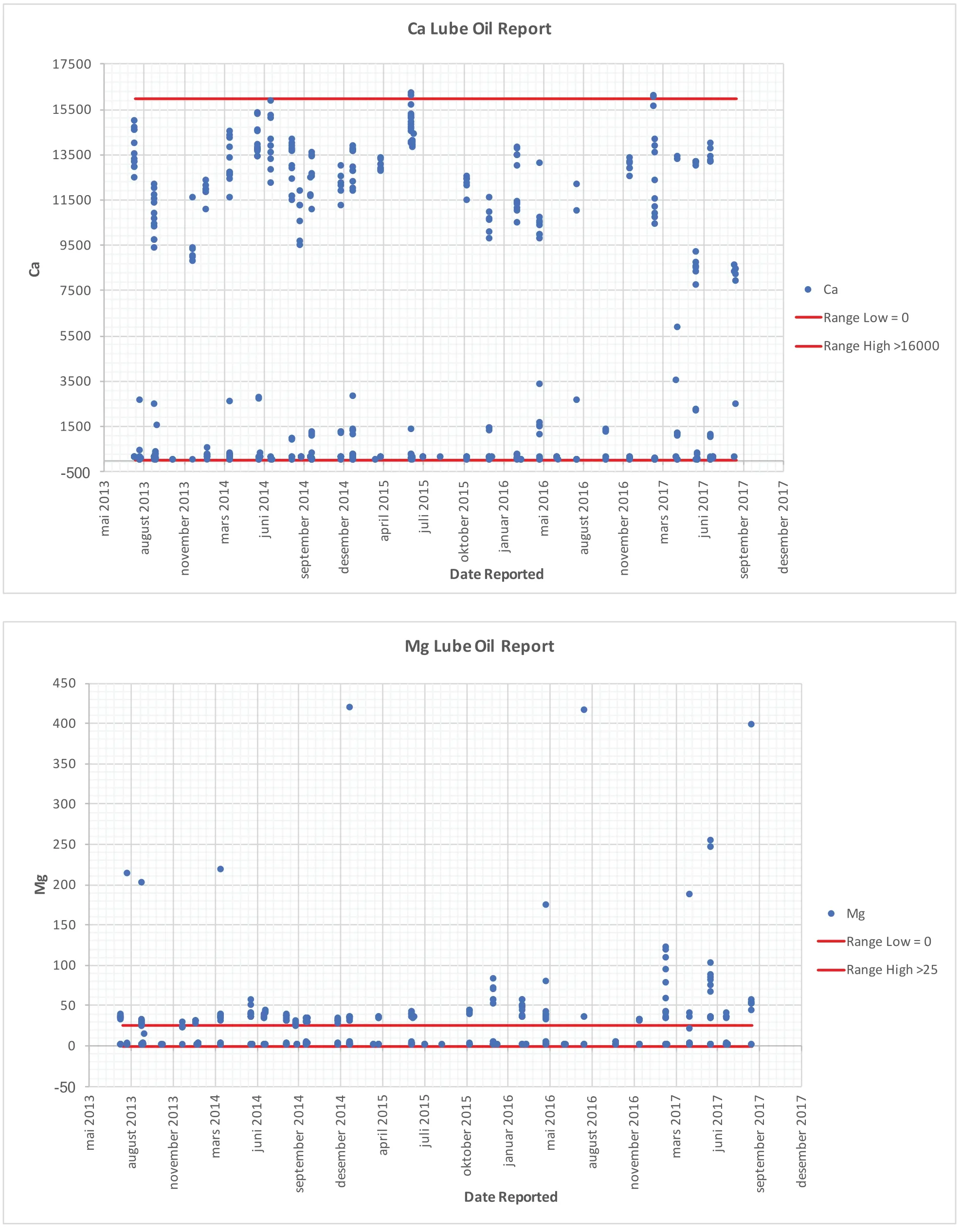
Figure 10.Historical values of Calcium (Ca) & Magnesium (Mg) PPM with threshold limits
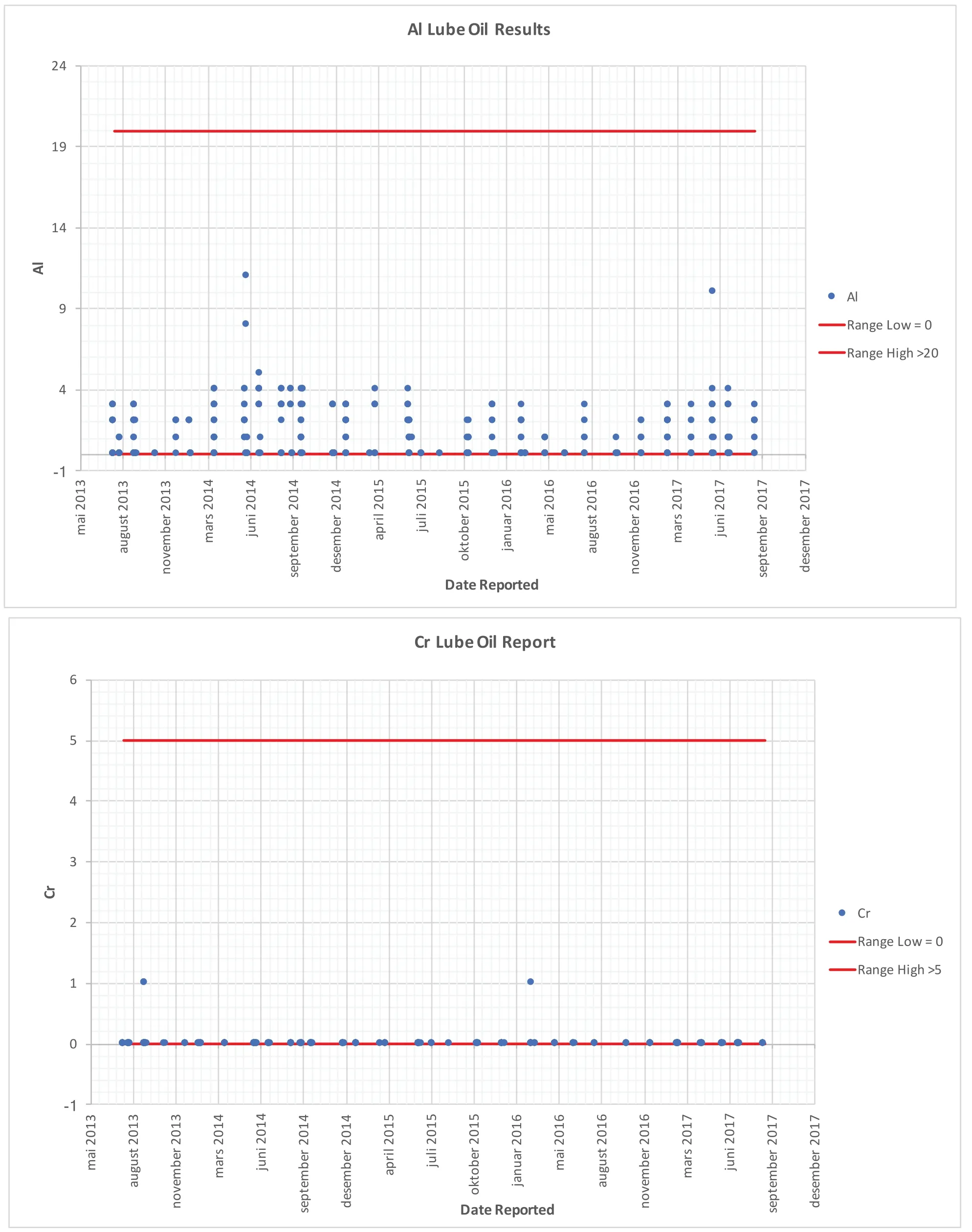
Figure 11.Historical values of Aluminium (Al), Chromium (Cr), Copper (Cu), Iron (Fe), Molybdenum (Mo), Tin PPM with threshold limits
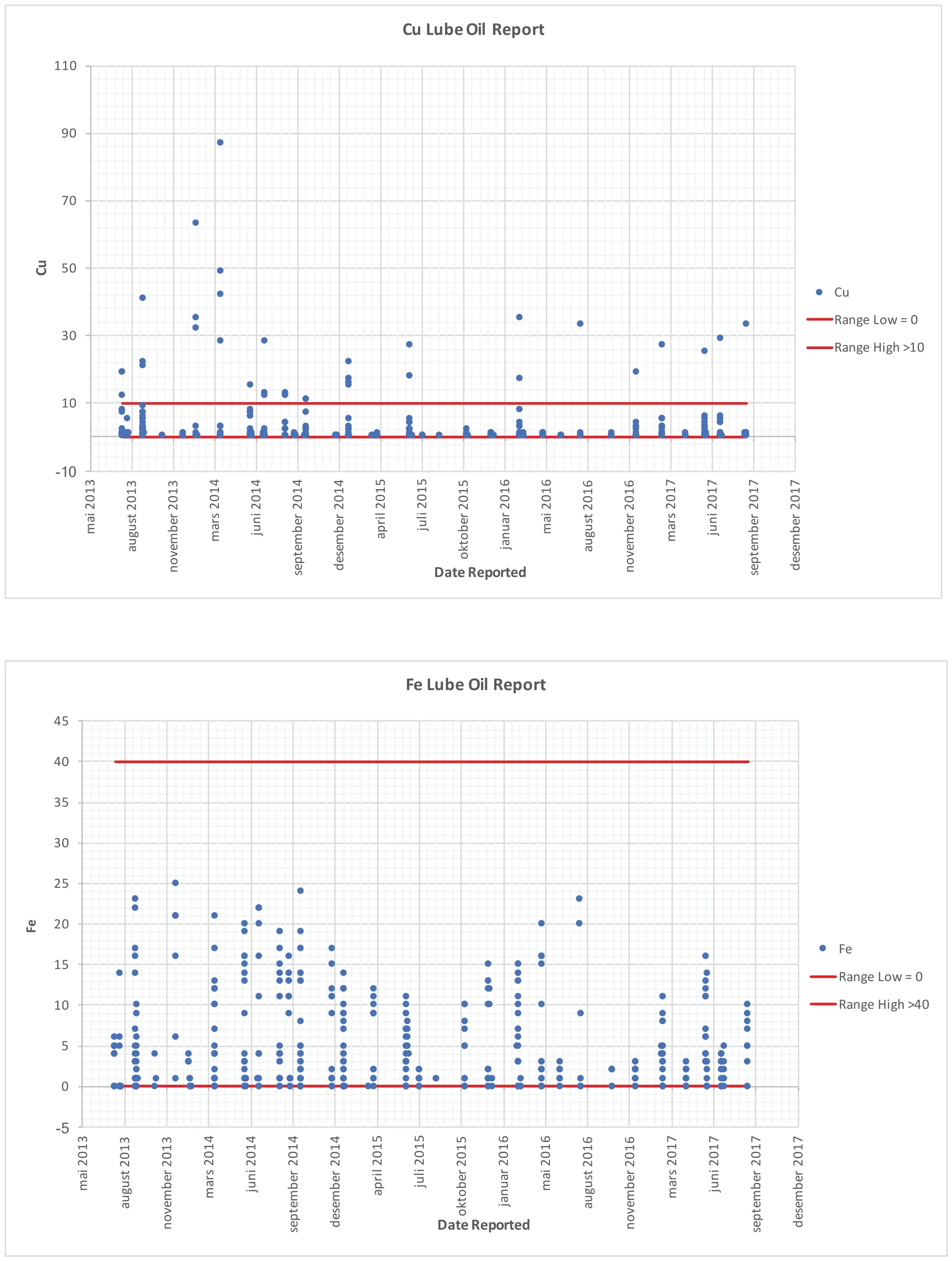
Figure 11.Continued
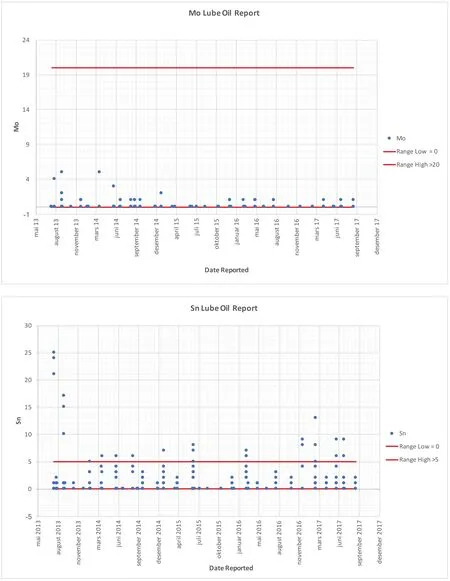
Figure 11.Continued
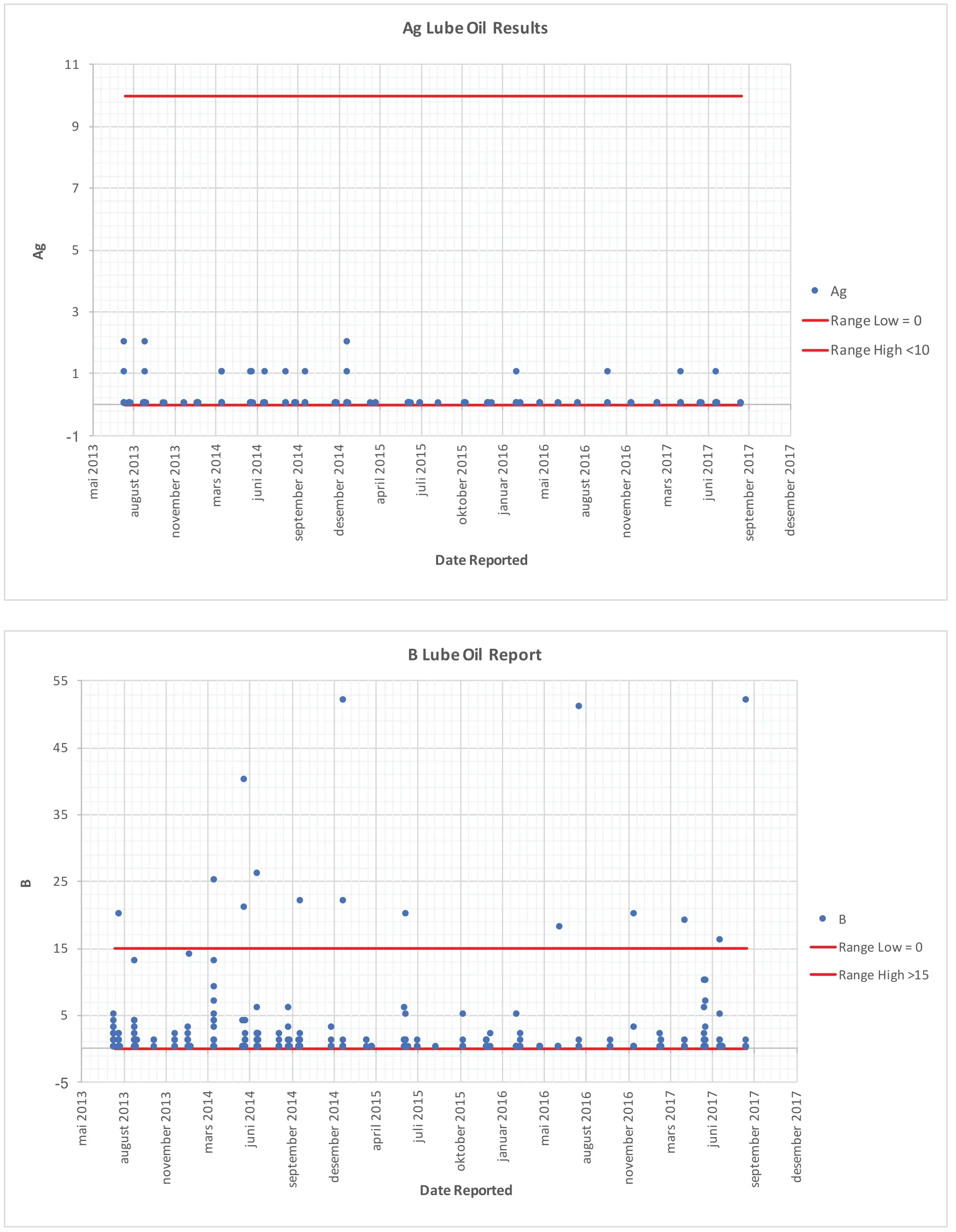
Figure 12.Historical values of Silver (Ag), Boron (B), Barium (Ba), Nickel (Ni), Vanadium (V) PPM with threshold values
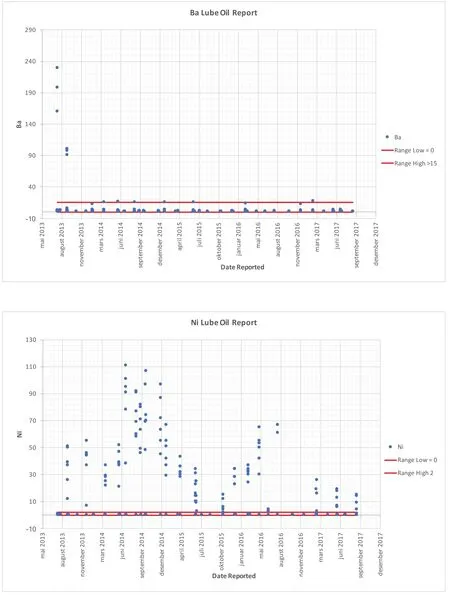
Figure 12.Continued
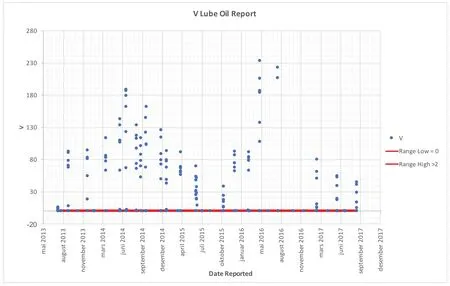
Figure 12.Continued
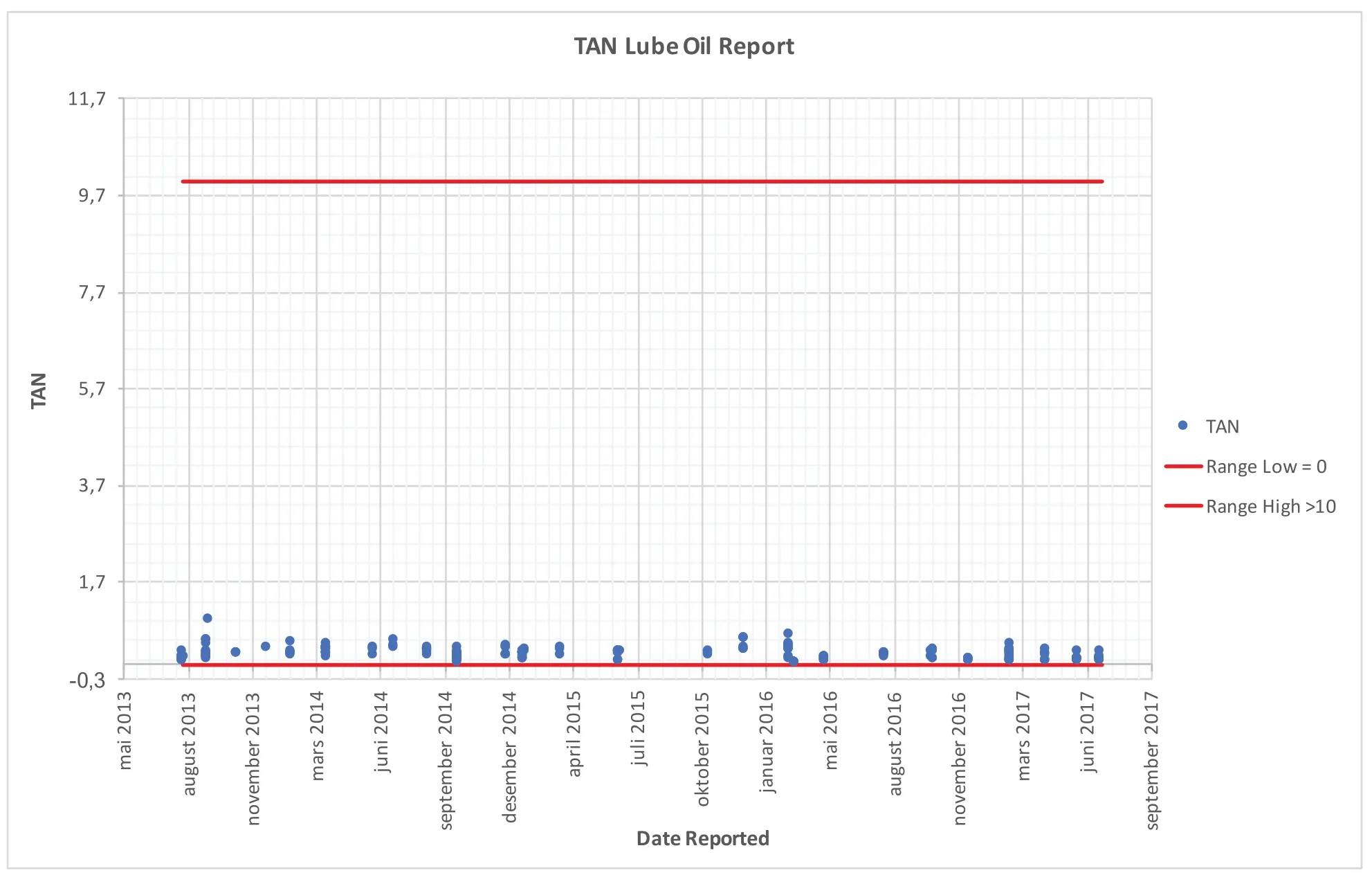
Figure 13.Historical values of Total Acid Number (TAN), Total Base Number (TBN) and Water Percentage (H2O) with threshold values
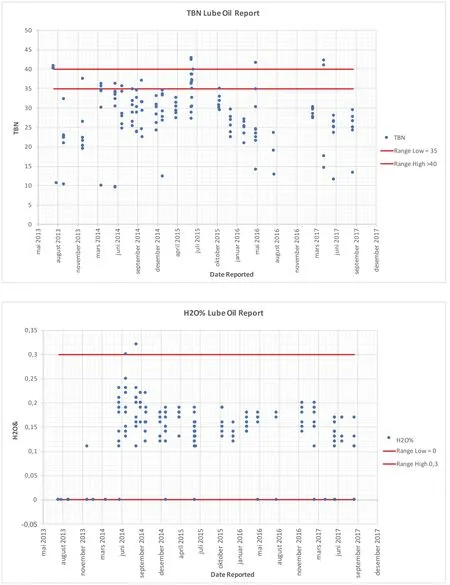
Figure 13.Continued
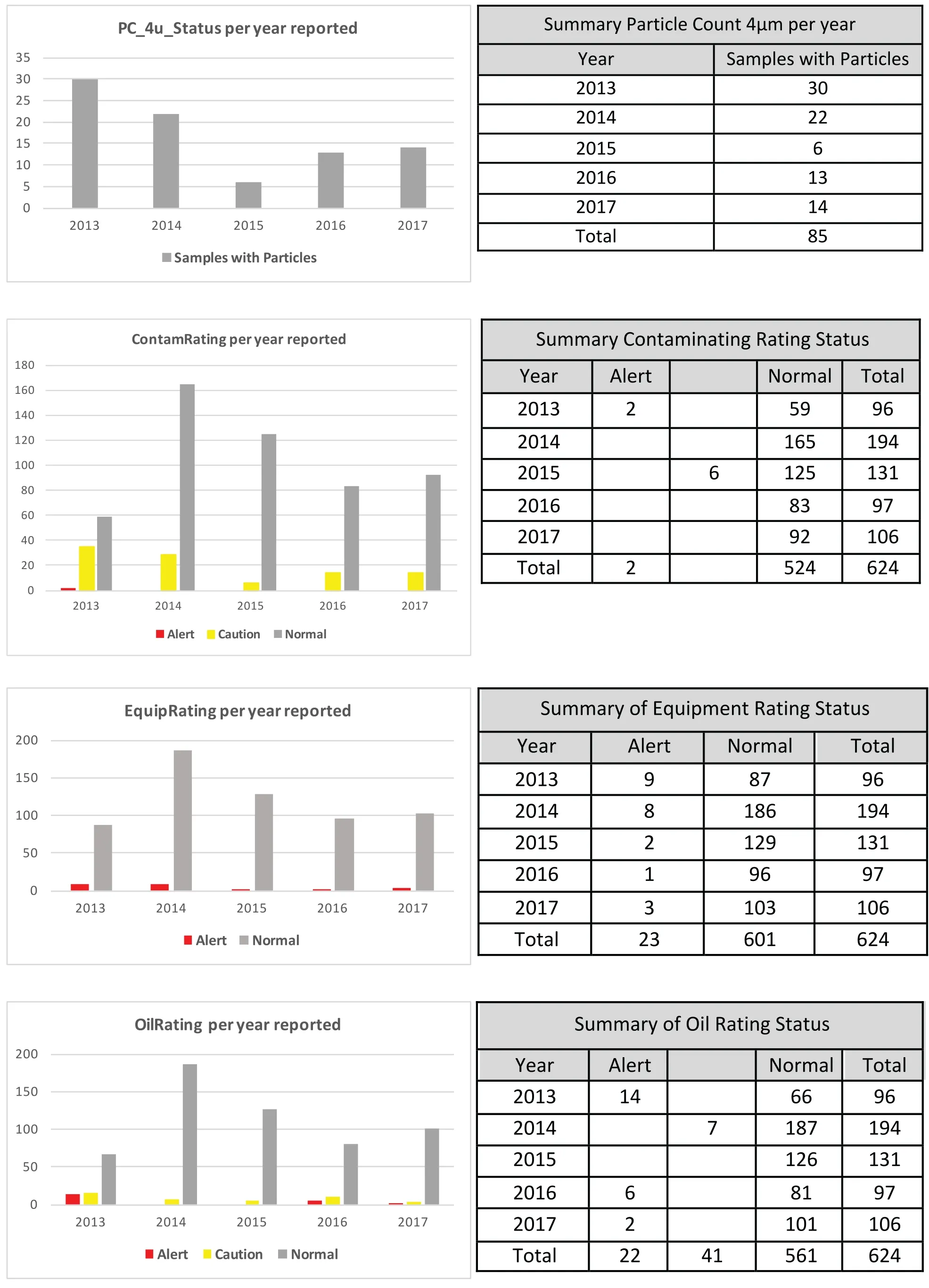
Figure 14.Particle count 4 μm, Contaminating rating, Equipment rating and Oil rating statuses (Normal, Caution & Alert) per year
Figure 14 , represents the particle count 4μm, contaminat- ing rating, equipment rating and oil rating statuses histori- cal samples.For the last three, as observed in the graphs the number of “alarm status” was marginal for ContamRating while for EquipRating and Oilrating was slightly higher.Like- wise, the “caution status” presented significant numbers for ContamRating and Oilrating.For the correlation coefficients, all three depict a strong relationship with the overall status, meaning that statuses of alarm and caution in any of the three ratings would have an important effect in the overall status of the test.For the Contamrating parameter, an alteration in the result may be to the sample not taken correctly, i.e.: not taken from the bottom of the reservoir, taken from turbulent areas prone to contamination, taken at the wrong temperature.The correlation values with overall status shown for alarm status – ContamRating (0,64), EquipRating (0,54), OilRating (0,62); caution status – ContamRating (0,64), EquipRating (0,54), OilRating (0,62)
4.2.Vibration Data
Due to the multiple combinations of assets, measurement points and vibration window the data was graphed with R software for each possible combination, allowing approx.1600 graphs as a result.Giving the amount of graphs these will not be included in this section, however the summary of vibrations per asset is included in Figure 15 .
In terms of the contribution of the graphs to the overall results, the author observed that for each graph/combination illustrated three to four measurement readings, giving very little information in terms of trends and patterns.In addition, as the thresholds upper limits were also provided1Thresholds for lower limit are non-existent as faulty assets can only result from surpassing the desired vibration value., a sim- ple analysis of assets (parameters) were evaluated against the high-alarm ranges.The findings showed that out of 15515 measurements, 1673 outside range; this represents 10,78% of assets were above the desired vibration for the time-period examined.
4.3.Performance Data
The system′s main function is to constantly monitor vessel machinery and equipment, delivering alarm and status infor- mation in real time.AIS monitors hundreds of components generating the so-called “signals”, for this study will be re- ferred as parameters.As two separate set of data were pro- vided for analysis, the following sub-section is divided in two parts; in each one contains a short description of the results obtained.
4.3.1.ResultsfromPeriodOne
The data set analysed in this section was time series based and contained 25089 measurement points for every parameter.One of the most evident characteristics observed was the non- linearity of the trend factor.As observed in the Figure 16 , from 537 parameters only six were found with values outside the acceptable range; these belonged to engine 1, engine 4, engine 5 and others.Parameters concerning compressors and engine 2, 3 and 6 did not presented irregular behaviours.
As explained in the introduction section, the second step within the high-level model for achieving predictive main- tenance was to match the results obtained with the actualmaintenance records.The purpose of doing so is to have pre- classified data –healthy, faulty – to be used when developing the predictive maintenance models.

Table 1 Correlation for parameters outside range for engine 4
However, once the author completed the analysis for this first set of data and attempted to perform a comparison with the maintenance activities done for the same period, no main- tenance records were documented.According to the company′s expert, this was due to two main reasons: 1).Crew did not consider maintenance activities done within this period as crit- ical to the operations, thus not logged into the system 2).No alarm was raised despite undesirable values with the param- eters listed below, thus no maintenance activity was carried out.
Consequently, a new set of data was provided for analysis in which maintenance records were also documented, these results are presented in the following section.
4.3.2.ResultsfromPeriodTwo
Figure 17 illustrates the results from the second data set.The process for obtaining information for those parameters outside the established ranges was the same mechanism ex- plained in the previous sub-section.The main difference from the first set of data was the number of points measured, which in this case were 64800 records for each parameter.In addi- tion, no data was provided regarding parameters for the three compressors as well as for engine 1 and 2, thus only 380 parameters were analysed.
The results show the following: i) For engine 3, only one parameter was outside range for most of the period measured, ii) For engine 4, two parameters were outside range, which correspond to the same parameters found for the first set of data, iii) For engine 5, three parameters presented values out- side normal functioning, with one of them corresponding to the only faulty parameter found for engine 5 in the first data set; in addition for this last parameter, it is observed that most of the measurement points were quite above the established limit, iv) For engine 6, only one parameter was outside range for most of the period measured and lastly v) Two other pa- rameters from miscellaneous components were found outside its range, one of them repeated from the first set of data.
4.3.2.1.CorrelationBetweenParameters.In order to iden- tify the relationship between the parameters displayed above, a correlation test shown in Table 1 and Table 2 was performed for those parameters that belonged to the same engine.It is important to mention that there is no correlation between pa- rameters from different engines/compressors, as the function- ing of each is not affected and cannot affect the others.Thus, the correlation test was done for engine 4 and 5, as the other engine/other had only one faulty parameter.The two tables below present the results for each engine.
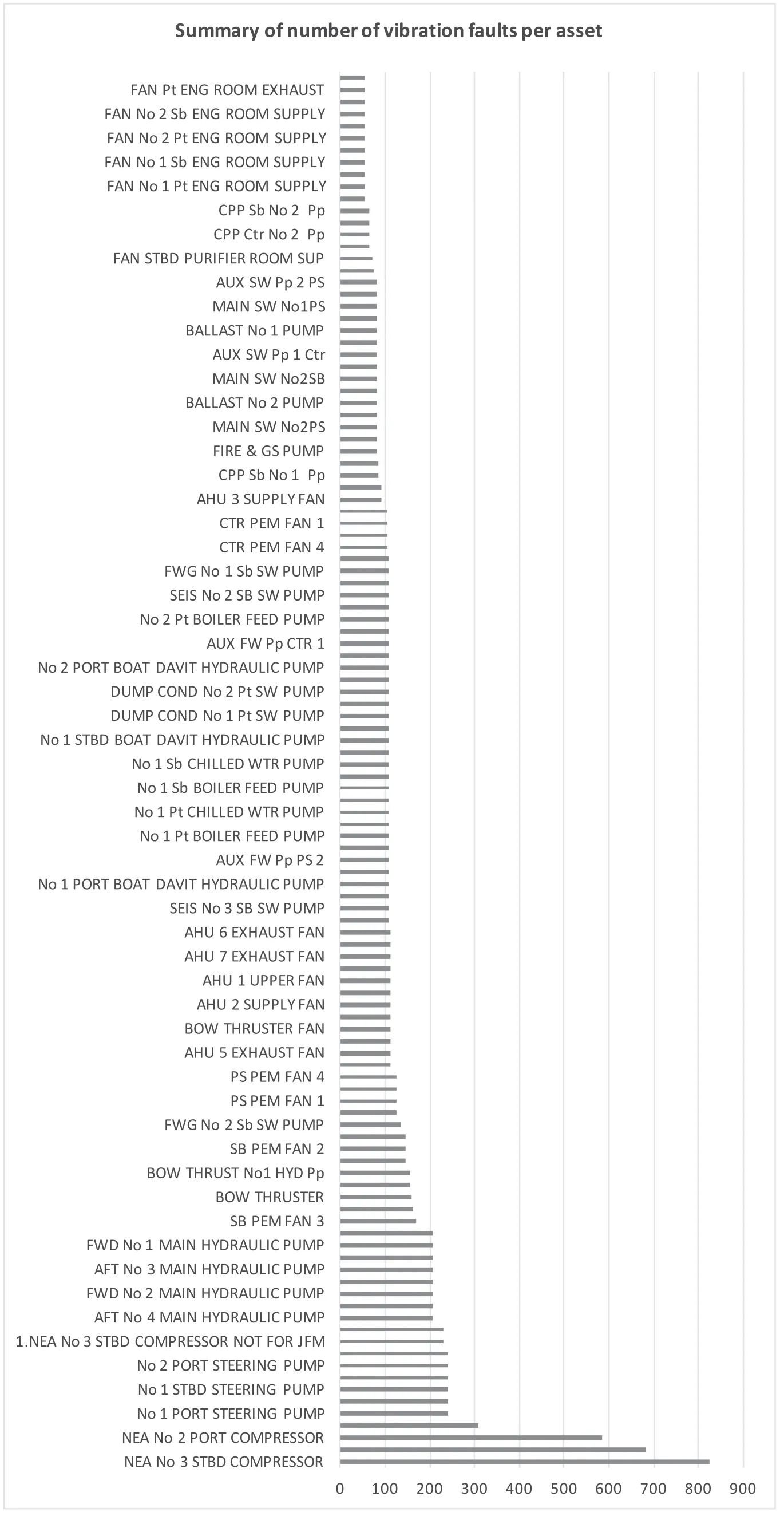
Figure 15.Summary of number of vibration faults per asset
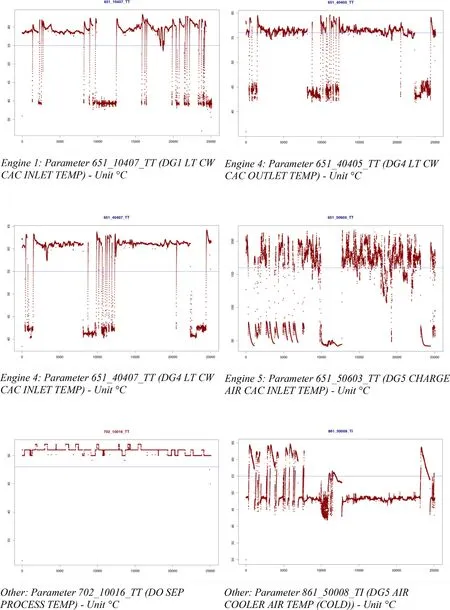
Figure 16.Results period one: parameters with values outside thresholds

Table 2 Correlation for parameters outside range for engine 5
Furthermore, a correlation test was performed for all pa- rameters within the same equipment.Figure 18 illustrates the correlation of parameters for Engine 3.The darker the blue color turns indicates a strong positive correlation, while the darker the red color indicates a strong negative correlation.As observed in the figure below, most parameters hold a strong relationship Figs.19 , 20 .
4.3.2.2.MatchingResultsfromPeriodTwowithActualMain-tenanceActivities.The following table illustrates the 8 pa- rameters with irregular values identified above matched against the actual maintenance records for the same time- period.In total 48 preventive maintenance records were found for engine 3, 4, 5 and 6.As observed in Table 3 the results showed no maintenance records for the parameters (compo- nents) in question.
5.The way forward: AI & Machine Learning
Recalling back to the definition of PdM stated in the the- ory chapter, Predictive Maintenance is a routing activity that supervises and evaluates the presence of warning conditions that indicate if an equipment is near to failure.If failure is detected, a corrective maintenance action is then scheduled to replace, repair or overhaul the equipment before a breakdown occurs.
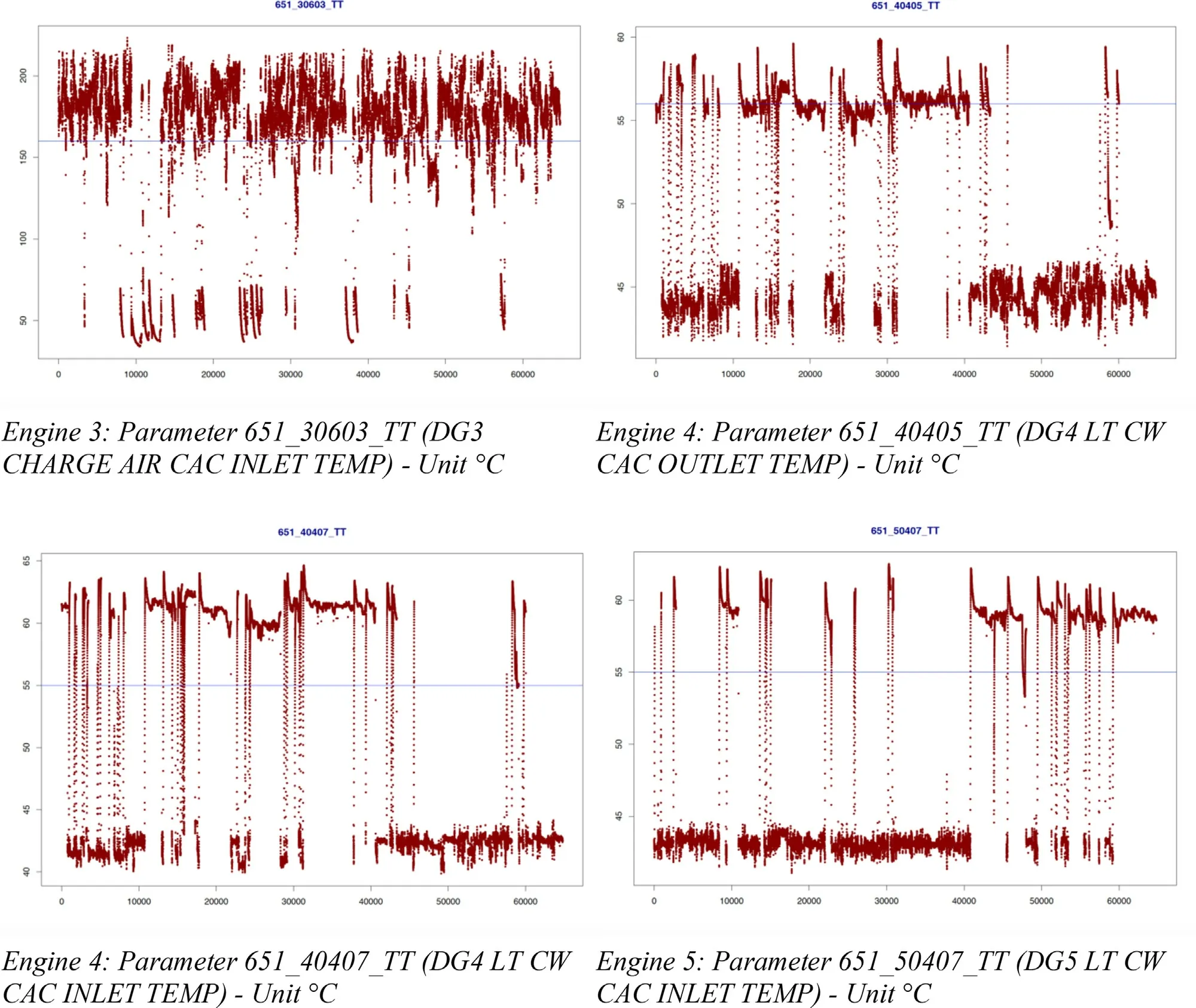
Figure 17.Results period two: parameters with values outside thresholds
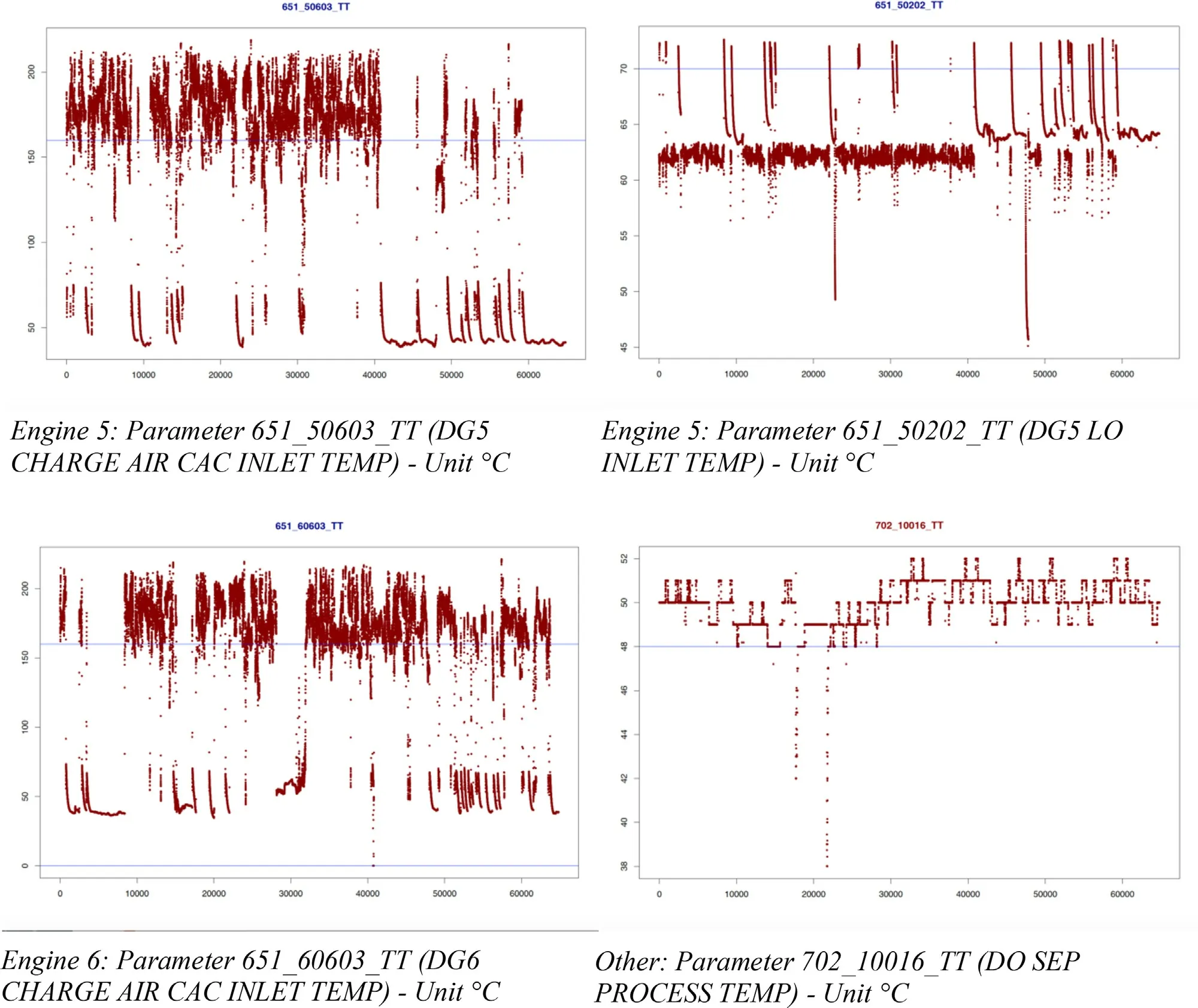
Figure 17.Continued
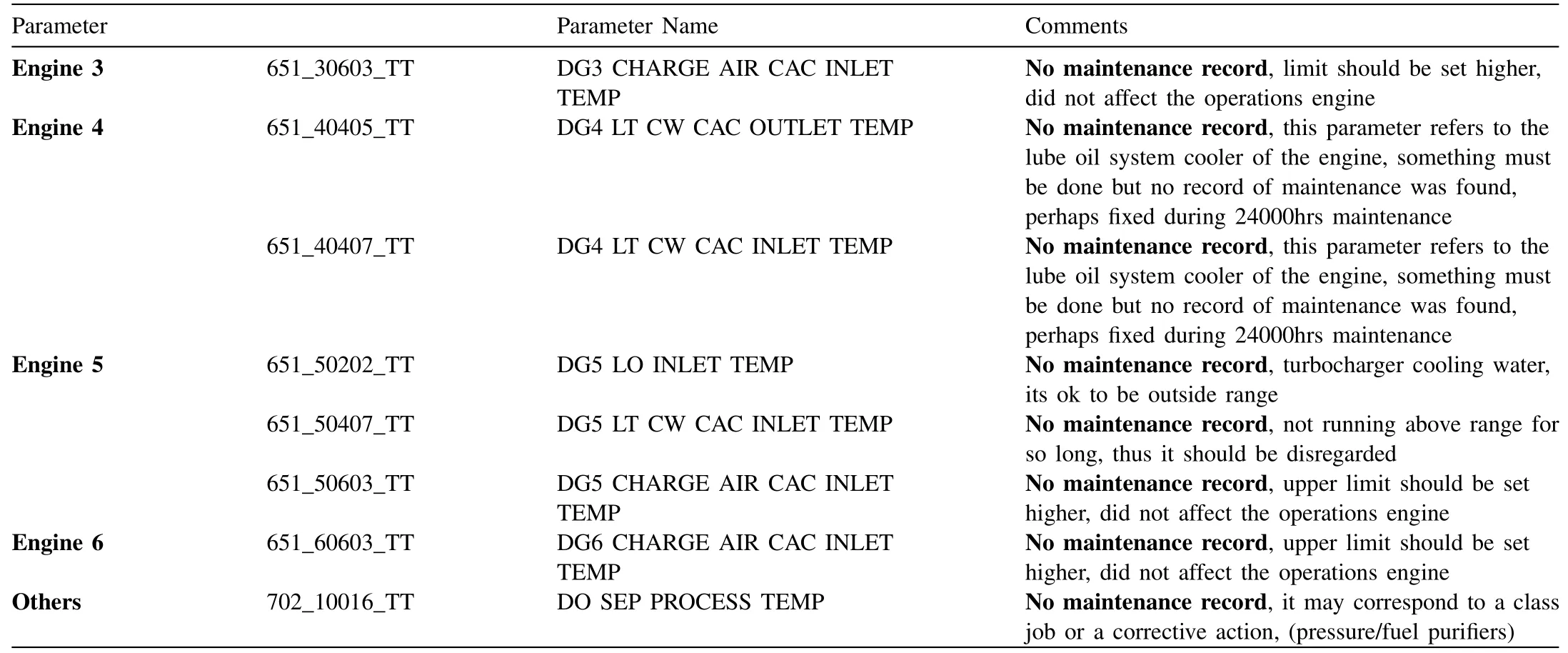
Table 3 Matching results with actual maintenance activities
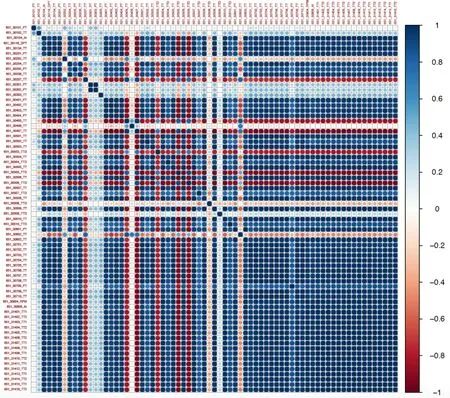
Figure 18.Correlation tests for all parameters from Engine 3

Figure 19.Framework for achieving predictive maintenance, adapted from [4]

Figure 20.Framework for achieving predictive maintenance, adapted from [4]
5.1.Framework for Achieving Predictive Maintenance: Stage 1
5.1.1.Stage1:LubeOilData
Those parameters that affected the most the overall status; namely copper and tin with a moderate effect and total base number (TBN), ContamRating, EquipRating and Oilrating as the most influential parameters.Despite the identification of critical parameters, the question of whether this information may be used to develop a predictive model it is not a straight forward affirmation.As explained previously, a pre-requisite for a predictive maintenance approach is an established con- dition monitoring system.The current practice for testing the lube oil status is by taking an oil sample from the equipment and send it to the laboratory to evaluate this sample, thus observations and alarms in real-time are not possible.Not to mention the possibilities of delays and turnaround time be- fore samples reach the destination and tests are performed, leaving a considerable window of time for possible failures due to irregularities in the lube oils.
According to [6] , there is a growing number of technolo- gies that allow online evaluation of lube oil within its own operating environment.In particular, there are existing tech- nologies that allow sensor monitoring for certain condition parameters, however due to the novelty of these technolo- gies, standard testing practices should not be completely dis- regarded.Thus, the authors consider it important that the com- pany examines the possibility of installing condition sensor- monitoring.Coupled with the existing historical data and hav- ing identified the most influential parameters that may lead to failure, this would make ideal inputs in developing a predic- tive maintenance model.
5.1.2.Stage1:VibrationData
The findings that resulted from the analysis of vibration data were perhaps the least telling from the three data sets.Even though this study allowed the identification of those as- sets that presented most failures in the total vibration levels as well as per window description, when introducing the mea- surement points in the analysis, the final combination showed 3 to 4 measurement readings, thus giving very little infor- mation for trends and patterns identification.Nevertheless, as vibration data is obtained through the condition monitoring system, according to [25] vibration analysis is considered the foundation of PdM and is highly useful in predictive purposes.In addition, it is also highly compatible with digital solutions [14] , which makes it a leading technology for developing a predictive model.The authors recommend further analysis of historical data, if possible data available from the start of the vessel′s condition monitoring or available by the company.This recommendation is in line with PwC Predictive Main- tenance 4.0 report [19] , which identified availability of data as the most important critical factor representing 60% in a successful implementation of a predictive maintenance, while technology and sensor monitoring share the second place of important critical factors.
5.1.3.Stage1:PerformanceData
Performance data was by far the largest set of data with over 90.000 measurement points for roughly 537 parameters.During the analysis of this data, it was identified those pa- rameters outside the established ranges, which in comparison to the number of parameters evaluated, only 14 were found with abnormal values.Despite the recognition of those irreg- ular parameters, it is not correct to declare them as critical parameters for the operations; there are two reasons behind this statement: 1).Even though a great deal of data points were analyzed, when translating them into days of operations, it would only constitute about two months of operations, thus if previous data to this time was evaluated, there is a consid- erable possibility of finding other parameters outside critical values.2).After performing correlation tests for all parame- ters that constituted an equipment (i.e.: engine or compressor) it was found that most parameters hold a strong correlation with each other, thus rather than affirming the importance of some parameters over the rest stating some parameters have greater influence over the status of the equipment, it is more accurate to say that the results shown a strong interdepen- dency among parameters of the same equipment.
5.2.Framework for Achieving Predictive Maintenance: Stage 2
5.2.1.Stage2:PerformanceData
Due to time limitations for this study and availability of data, this stage was only carried out for performance results.Stage 2 of this study consisted in matching the results of pa- rameters with irregular values obtained in stage 1 against the actual maintenance records.The purpose of doing this was to identify if something was done about the equipment - parame- ters containing values outside the thresholds -, and if so what actions were taken.As observed in the results section, 48 preventive maintenance records were analyzed and matched against 8 parameters with abnormal behavior from engine 3, 4, 5 and 6.The results showed no maintenance records for the parameters (components) in question.This was either because they were not considered as affecting the overall operations, thus no maintenance was performed, it was not logged in the maintenance system or could have possibly been fixed as a part of fixed maintenance jobs.Either option, shows a strong prevalence of a preventive approach by the company and the lack of use of performance data to lead their maintenance activities.After exposing these results, it poses the questions of what is needed to reach to stage 3 of developing a pre- dictive model and algorithms, and what are the requirements that need to be fulfilled to do so.The following sub-section will aim at proposing specific steps the author has identified as crucial before stage 3 can be initiated.

Figure 21.Further development stage 2: required elements to develop a predictive system
5.3.The Way Forward: Extending Stage 2
Predictive maintenance is all about anticipating to failures and taking the necessary preventive actions.The recent ad- vances in machine learning and cloud storage generate great opportunities to utilize large amounts of data coming from machines and sensors to not only allow equipment monitor- ing but also predict future breakdowns.However, as simple as predictive maintenance sounds, in real-life scenarios it is quite challenging to obtain all the necessary data required to actually make predictions.One of the upmost event of inter- est for developing predictive maintenance systems, is failure data [10] ; the reason behind this is because when developing a predictive model using machine learning techniques, one must “teach” the model what type of data constitutes non- failure data and failure data.Once the model has these two inputs it will learn by detecting patterns amongst parameters that have previously led to equipment failure.Then by us- ing pattern recognition techniques it will identify situations similar to those that occurred in the past.That said, without failure data the model would be ineffective as it will never learn to predict a failure.This is exactly the case with the results from performance data presented in the previous sec- tion, as the data set presented very few cases of failure, and the few failure parameters identified were either not treated as failures or if a maintenance action was taken, this was not reported.
[9] The Model for predictive maintenance in Figure 21 , identifies four elements - Identification of Failure Modes, De- tection of Potential Failures, Asset Criticality and Likely Con- sequence of Failure and Recommended Corrective Action –that shall be covered prior stage 3.
Whenidentifyingfailuremodesfailures events are associ- ated with the failure causes that may lead to loss of a spe- cific equipment or one of its functions.Typically, this task can be achieved following Failure Modes and Effects Anal- ysis (FMEA).The reason to fulfil this element is because in order to develop an effective prediction model, it is essential that the failures causes and modes that are to be avoided are known.
DetectionofPotentialFailuresis regarded to the failure data that originates from monitoring/measurement techniques, for this case it relates performance and vibration data.The results hold little information regarding failure data; this is explained that for obvious reasons the company does not al- low engines and compressors to run to failure, thus applies a preventive maintenance approach.Within the data it was not possible to observe a complete cycle or interval of main- tenance of equipment; analyzing older data is thus required to observe the cycles of equipment.Additionally, if this ac- tivity is performed successfully, it still remains unknown the possible behavior (data) that could have originated if no main- tenance was performed, and the asset would have been run to failure.Yet, assuming the maintenance interval is provided, the question of how much longer it would have continued to function if they had not intervened at that point of time is necessary to solve, as it will lead to discovering failure pat- terns.According to [9] shortage of accurate, available data to be able to populate and test mathematical predictive models is one of the most serious limitations in predictive maintenance.Factors such as the manufacturer recommendation on compo- nent operational time and maintenance interval, coupled with the expertise from vessels chief engineers or related party could, however, aid in modelling the data required for failure events.Other techniques, like various forms of statistical anal- ysis such as regression models, can be drawn upon the current data availability to predict equipment failure.However, these techniques would not constitute a solution based on artificial intelligence and machine learning, but rather a static model that would require constant updates and relationships between variables, compared to an algorithm option that would learn from data without relying on rules-based programming [9] .
AssetCriticalityandLikelyConsequenceofFailurerelates to how critical an asset is to the overall operations.It is im- portant to carry out a risk assessment and identify whether the failure of an assets would constitute a catastrophic event and to weight down if the failure would still represent a better solution from the cost and operational perspectives or if an asset should continue following a preventive maintenance ap- proach; in other words, a risk assessment of asset criticality would allow to fully understand the potential business im- plications and consequences of an asset failure.Furthermore, forecasting the likely consequence is important for making the correct path of action.
RecommendedCorrectiveActionOnce covered the steps regarding the process of asset failure, its different failure modes and business implications if that asset was to fail, it is necessary to determine the most appropriate corrective ac- tions to be enforced.This would result in a predictive model that would make more informed decision regarding to the best fitted course of action.
5.4.Research Limitations
The uttermost limitation of this study is the lack of avail- ability to more data.It is important to mention that the com- pany provided all the data available to them, however due to the nature of the data and its storage in the vessel itself, one challenge was to transferring it to on-shore.Additionally, data required from third party providers such as threshold data suffered a significant submission delay.Furthermore, a better overview of parameter failures could have been achieved by analyzing older historical data, however this information was unknown until the actual data analysis was performed.
6.Conclusion
Technological advances, challenging operating conditions and the need for maintenance cost and optimization represent a great combination to be tackled by big data and predictive analytics.The 2019 status of condition monitoring technolo- gies and predictive maintenance within shipping will be very different in 2030.It is expected that shipping will undergo an accelerated development, as it is already noticeable that the industry is pushing forward to the science of data and more sophisticated maintenance approaches.Even though the field of predictive maintenance is still in its infancy within this industry, and plenty of work is left to uncover the full poten- tial that big data and artificial intelligence represent, forward thinking organizations must consider how to get involved in developing and implementing these technologies into their op- erations.
This paper aimed at initiating the development of a pre- dictive maintenance solution based on a computational artifi- cial intelligence model using real-time monitoring data in the shipping industry.The results showed a great potential to es- tablish a predictive model, yet elements such as failure modes identification, detection of potential failures and asset critical- ity are just some of the issues that need to be solved before carrying out the development of algorithms and a solution based on artificial intelligence.The current level of real-time condition monitoring only allows organizations a limited level of reliability, as the probability of future of unforeseeable and inexplicable failures is still present in a condition based main- tenance approach.Yet, these failures could be reduced with a predictive maintenance strategy.The benefits of adopting PdM are substantial, as the power of artificial intelligence allows the recognition of patterns and anomalies that would otherwise scape from the human eye; a PdM allows to pre- dict previously unpredictable events, anticipate failures and maximize the lifetime of equipment.These are just some of the most palpable advantages shipping companies are to gain by introducing new technologies and predictive platforms to their maintenance strategy and everyday operations.
6.1.Suggestion for Future Studies
As previously mentioned, predictive maintenance within the shipping industry is still in its early stages.With only 2% of all registered vessels with a condition monitoring scheme in place [23] , the potential for introducing a predictive main- tenance approach is huge.This gives the possibility of future studies from different perspectives such as predictive mainte- nance modelling, the applicability of big data in the shipping industry, clouds and server capacities from vessels to on-shore installations, just to name a few examples.
Furthermore, it would be relevant to study the impact of adopting new technologies from the organizational level, ex- amine the integration of people with new grades of automa- tion and explore the effects of artificial intelligence in the current roles and tasks within the organization.
Bibliography
[1] T.M.Allen , US Navy analysis of submarine maintenance data and the development of age and reliability profiles, Department of the Navy SUBMEPP, 2001 .
[2] I.Alsyouf , Journal of Quality in Maintenance Engineering 12 (2) (2006) 133–149 .
[3] E.CEN , Maintenance terminology 13306 (2010), European Committee for Standardization, Brussels, 2001EuropeanStandard.
[4] D.Chappell , A GUIDE FOR TECHNICAL PROFESSIONALS, Mi- crosoft Corporation, 2015 Sponsored by .
[5] D.O.Chukwuekwe , P.Schj?lberg , H.R?dseth , A.Stuber , in: Paper presented at the EFNMS Euro Maintenance Conference, 2016 .
[6] CIMAC, R.(2011).Used engine oil analysis, user interpretation guide: no.
[7] J.Cohen , Applied Psychological Measurement 12 (4) (1988) 425–434 .
[8] G.DNV , Strategic Research and Innovation.Position Paper (2014) 6–2014 .
[9] S.Dunn , Asset Management & Maintenance Journal 29 (1) (2016) 4 .
[10] Gauher, S.(2016).Evaluating Failure Prediction Models for Predic- tive Maintenance.Retrieved 13.05.2018, from.https://blogs.technet.microsoft.com/ machinelearning/ 2016/ 04/ 19/ evaluating- failure- prediction- models- for- predictive- maintenance/
[11] H.M.Hashemian , W.C.Bean , IEEE Transactions on Instrumentation and measurement 60 (10) (2011) 3480–3492 .
[12] I.Lazakis , A.?l?er , Proceedings of the Institution of Mechanical En- gineers, Part M: Journal of Engineering for the Maritime Environment 230 (2) (2016) 297–309 .
[13] G.Manno , Statistical analysis of casualty data: a simple method with application on ship machinery systems, DNV, 2012 .
[14] R.K.Mobley , An introduction to predictive maintenance, Butter- worth-Heinemann, 2002 .
[15] P.Neale , S.Thapa , C.Boyce , Preparing a case study: A guide for designing and conducting a case study for evaluation input, Pathfinder international Massachusetts, 2006 .
[16] F.S.Nowlan , H.F.Heap , Reliability-centered maintenance, United Air Lines Inc, San Francisco Ca, 1978 .
[17] P.Okoh , S.Haugen , Journal of Loss Prevention in the Process Industries 26 (6) (2013) 1060–1070 .
[18] A.Prajapati , J.Bechtel , S.Ganesan , Journal of Quality in Maintenance Engineering 18 (4) (2012) 384–400 .
[19] PwC.(2017).Predictive Maintenance 4.0 Predict the unpredictable.
[20] R Project.Retrieved 05.05.2018, 2018.https:// www.r-project.org/ about.html
[21] M.Rausand , H.Arnljot , System reliability theory: models, statistical methods, and applications, 396, John Wiley & Sons, 2004 .
[22] C.Scheffer , P.Girdhar , Practical machinery vibration analysis and pre- dictive maintenance, Elsevier, 2004 .
[23] D.Shorten , Why has the shipping industry been slow to adopt, TECH- NICAL INVESTIGATIONS DEPARTMENT, United Kingdom, 2012 Lloyd’s Register EMEA .
[24] A.M.Smith , G.R.Hinchcliffe , RCM–Gateway to world class mainte- nance, Elsevier, 2003 .
[25] Sullivan, G., Pugh, R., Melendez, A.P., & Hunt, W.(2010).Opera- tions & Maintenance Best Practices-A Guide to Achieving Operational Efficiency (Release 3): Pacific Northwest National Laboratory (PNNL), Richland, WA (US).
[26] Swedish Standard Institute.(Ed.) (2001).Swedish Standard Institute, Stockholm.
[27] A.Wilson , Asset Management Focusing on Developing Maintenance Strategies and Improving Performance (2013) .
[28] T.Zaal , Profit-driven maintenance for physical assets, Maj Engineering Publishing, 2014 .
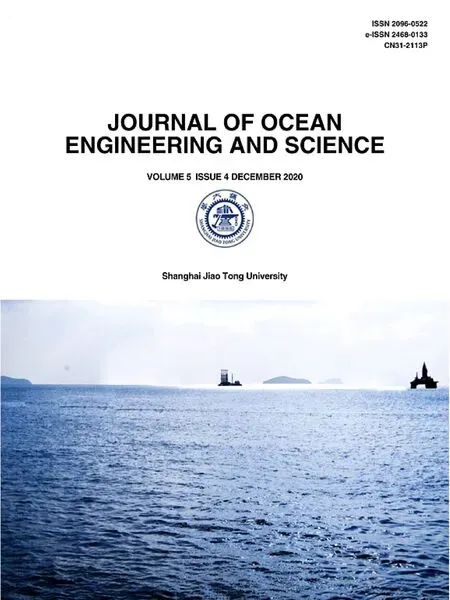 Journal of Ocean Engineering and Science2020年4期
Journal of Ocean Engineering and Science2020年4期
- Journal of Ocean Engineering and Science的其它文章
- Crashworthiness assessment of thin-walled double bottom tanker: Influences of seabed to structural damage and damage-energy formulae for grounding damage calculations
- Towards an improved intuitive interface for Remotely Operated Vehicles
- A computationally efficient method for identification of steady state in time series data from ship monitoring
- A numerical simulation case study of the coastal currents and upwelling in the western Persian Gulf
- Analysis of Lakes pollution model with Mittag-Leffler kernel
- Steady and unsteady flow simulation with SRH-2D
